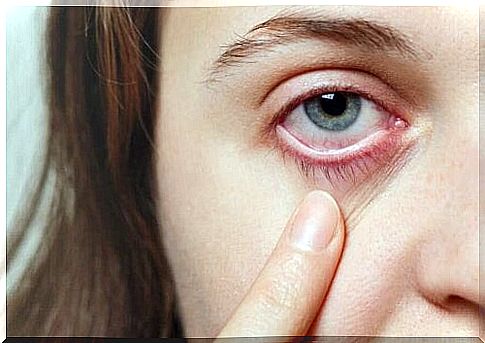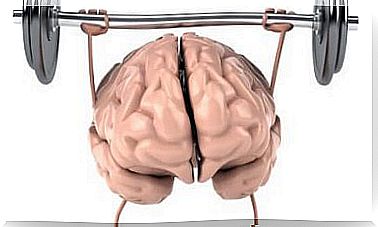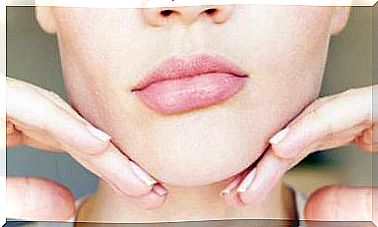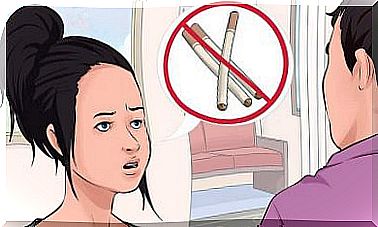Ophthalmic Migraines: How Can They Affect You?
Ophthalmic migraines are a type of migraine where one can experience visual difficulties. Here we tell you how to recognize them and what you can do to prevent and treat them. So take note!

Ophthalmic migraines are a clinical type of migraine. Usually, they last for a short time and may or may not be accompanied by headaches. In this article, we’ll explain how to recognize them and what you can do to treat and prevent them. So take note!
What are ophthalmic migraines?
Ophthalmic migraine headaches, also called eye migraines, refer to a condition that manifests as a temporary, painless blurring of vision, and may affect only one eye, or both. Migraine is a strong, sharp headache that occurs because of a sudden change in blood flow to the brain.
Because this disturbance affects the entire brain, it can also affect various functions, including sight. Often times, this disorder subsides within an hour, and although these symptoms may sound alarming, it is almost always a mild process.

What are the causes of ophthalmic migraines?
Ophthalmic migraines can affect anyone. It seems that they have a link with genetics. That is to say, part of this pathology can be a family inheritance.
On the other hand, there are several factors which, as we said, can impair the blood flow to the brain, which would cause this pain. Some of these factors can be:
-
The stress
-
Lack of sleep
-
Certain light stimuli
-
Ingestion of certain foods or drinks such as chocolate, coffee, alcohol, cheese, etc.
Thus, on certain occasions, this type of migraine can be linked to certain diseases such as epilepsy, lupus or a particular type of anemia.
What symptoms do ophthalmic migraines produce?
Ophthalmic migraines can affect one eye, or both. As Mayo Clinic certified neurologist Dr. Jerry Swanson explains, visual symptoms don’t last long.
However, these can interfere temporally in certain activities such as reading or driving . In addition, the following clinical manifestations are described:
-
Appearance of blind spots, especially in the central part of the field of vision. These points are called scotomas. Their size can vary and even affect the whole vision. They can appear on one eye or two
-
Vision of glittering dots or lights
-
The patient may have double vision
-
Increased sensitivity to light or certain sounds
These visual symptoms may be accompanied by nausea, vomiting, or headache. These headaches characteristically affect only one side, putting increased pressure on the eyes. It worsens with exertion and improves with rest in quiet and dark places.

Treatment and prevention
People who present with ophthalmic migraines are likely to suffer from them throughout life. There will be times when, for different factors, they will present a more or less strong intensity, while other times will be less conducive to migraines.
However, it is important that each person learns to recognize the symptoms, the frequency and the measures to put in place to control the crisis. In the majority of cases, ophthalmic migraines resolve on their own within an hour.
When an ophthalmic migraine attack with visual symptoms suddenly appears, and the person is doing tasks that may be unsafe, it is important to stop and rest until the symptoms subside. and make sure you don’t take any risks.
It is always advisable, faced with the first episodes, to call a doctor so that he performs a complete examination and can rule out diseases that can cause this type of migraine.
From there, the doctor will decide whether or not it is necessary to offer treatment. It will depend on the intensity and frequency of migraines. Treatment can be based on anti-inflammatory drugs or pain relievers such as ibuprofen and paracetamol at the time of the attacks.
There are also preventive medical treatments that can be used. Thus, the most advisable will be that each person study their own case, know the factors that trigger crises and avoid them, as in the case of certain foods or certain activities. Good rest and stress control will always help manage seizures better.
In summary
Ophthalmic migraines can affect anyone. If you experience frequent ophthalmic migraine attacks, it is recommended that you seek medical attention to make sure you are okay.
For the control and prevention of ophthalmic migraines, each person who suffers from it must know how to recognize the clinical cause as well as the triggers. Thus, it will be possible to avoid an ophthalmic migraine attack.









